Dopo il rilascio di WordPress 4.2 in aprile, lo sviluppo della prossima major release WordPress 4.3 è iniziato a pieno ritmo. Abbiamo seguito da vicino lo sviluppo e siamo entusiasti di annunciare che WordPress 4.3 dovrebbe essere rilasciato il mese prossimo. In questo articolo vi mostreremo le novità di WordPress 4.3 con caratteristiche e screenshot.
Nota: potete provare la versione beta sul vostro computer o su un ambiente di staging utilizzando il plugin WordPress Beta Tester.
Modifica dei menu nel Customizer
Con una forte spinta all’adozione del personalizzatore di temi, il team centrale di WordPress sta lentamente spostando tutte le opzioni del tema una per una nella schermata del personalizzatore.
La gestione dei widget è stata aggiunta al customizer in WordPress 3.9, mentre il cambio di tema è stato aggiunto in WordPress 4.2.
WordPress 4.3 consentirà di gestire i menu di navigazione dal personalizzatore del tema.
Sebbene sia ancora possibile gestire e modificare i menu utilizzando la vecchia interfaccia, l’obiettivo di questa nuova aggiunta è quello di consentire agli utenti di personalizzare tutte le impostazioni del tema da un’unica pagina di impostazioni con un’anteprima dal vivo.
Questo cambiamento ha incontrato una forte resistenza da parte di alcuni membri molto importanti della comunità. Sarà interessante vedere come si evolverà il personalizzatore nelle prossime versioni.
Aggiunta dell’icona del sito o della favicon
La favicon o icona del sito è la piccola icona che si vede accanto al nome di un sito nel browser web. In passato, gli utenti di WordPress dovevano utilizzare un plugin per aggiungere una favicon o aggiungerla manualmente modificando i file del proprio tema.
WordPress 4.3 vi permetterà di caricare la favicon o l’icona del sito dall’area di amministrazione di WordPress. È sufficiente visitare Impostazioni ” Generali e caricare un’immagine per l’icona del sito.
WordPress vi permetterà di ritagliare l’immagine e vi mostrerà anche un’anteprima live di come apparirà nei browser e come icona mobile.
Migliori password
WordPress 4.3 introdurrà una nuova interfaccia utente per la schermata di reimpostazione della password. Il campo della nuova password verrà compilato automaticamente con una password forte.
Quando si aggiunge un nuovo utente, WordPress ora gli invia un link per la reimpostazione della password invece di una password preselezionata in testo normale. Durante il processo avete anche la possibilità di fare clic sul pulsante mostra password e aggiungere una password per il nuovo utente. WordPress mostrerà una password forte compilata automaticamente quando si fa clic sul pulsante mostra password. Se lo si desidera, è possibile modificarla con la propria password.
L’obiettivo è assicurarsi che gli utenti comprendano l’importanza di utilizzare password forti. Potete anche dare un’occhiata al nostro tutorial su qual è il modo migliore per gestire le password per WordPress.
Miglioramenti all’editor
Molti proprietari di siti WordPress passano la maggior parte del tempo a scrivere post. Se si utilizza l’editor visuale, si noterà che spostare il mouse per fare clic sui pulsanti di formattazione rallenta il ritmo di scrittura.
Con la versione 4.3, WordPress ha introdotto le scorciatoie per il testo in linea. Queste scorciatoie sono simili a quelle di Markdown, che consentono di formattare il testo e aggiungere elementi utilizzando semplici marcatori nel testo. Tuttavia, a differenza di Markdown, questi modelli di testo trasformano immediatamente i modelli in HTML.
Utilizzando * o – si avvia un elenco non ordinato.
L’uso di 1. avvia un elenco ordinato.
L’uso di # trasformerà in h1. ## per h2, ### per h3 e così via.
L’uso di > trasformerà in blockquote.
Questo velocizzerà sicuramente la scrittura per gli utenti più esperti.
Editor visivi/testuali in Press This
In WordPress 4.3, lo strumento Press This avrà un editor di post visuale e testuale completo. In questo modo sarà più facile creare rapidamente i post con strumenti di formattazione adeguati.
Sviluppi sotto il cofano
In WordPress 4.3 i termini condivisi su più tassonomie saranno ora suddivisi. Questo fa parte della roadmap di miglioramento delle tassonomie in corso.(#30261)
Nella gerarchia dei template di WordPress, il file singular.php agirà ora come template di fallback predefinito per single.php e page.php. (#22314)
WordPress 4.3 consentirà agli sviluppatori di selezionare una colonna primaria quando si utilizzano tabelle di elenchi come nelle schermate dei post, delle pagine o della libreria multimediale.(#25408)
Speriamo che questo articolo vi abbia dato un’idea delle novità di WordPress 4.3. Fateci sapere quali funzioni vi entusiasmano e quali vorreste vedere nelle prossime versioni di WordPress.
Se vi è piaciuto questo articolo, iscrivetevi al nostro canale YouTube per i video tutorial su WordPress. Potete trovarci anche su Twitter e Facebook.

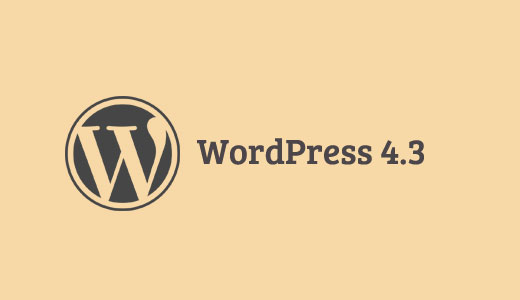
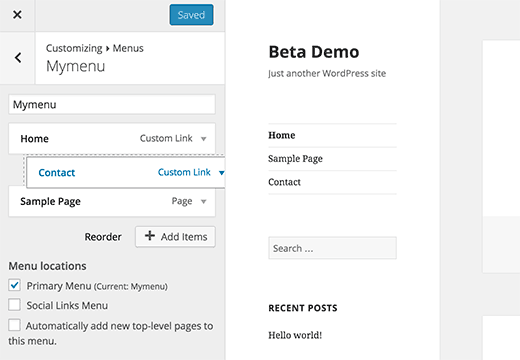
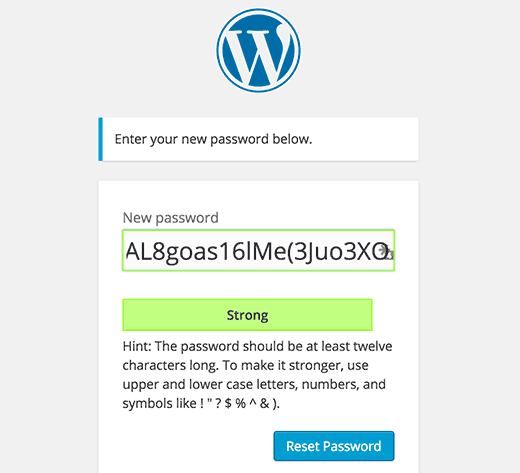
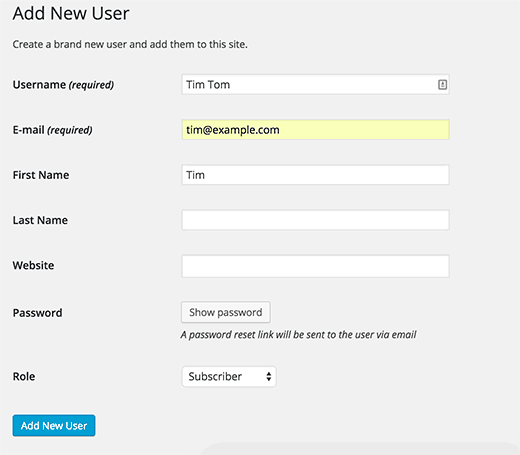
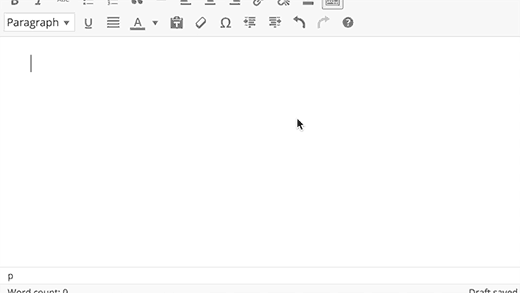
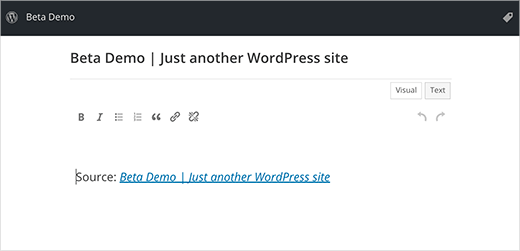




Syed Balkhi says
Hey WPBeginner readers,
Did you know you can win exciting prizes by commenting on WPBeginner?
Every month, our top blog commenters will win HUGE rewards, including premium WordPress plugin licenses and cash prizes.
You can get more details about the contest from here.
Start sharing your thoughts below to stand a chance to win!
Tushar Sharma says
I’m running WP 4.3 on localhost and can’t see option to upload favicon. I first thought that the settings was hijacked by Jetpack, but found that Jetpack sends me back to settings page where the option is missing.
Ravi says
Can u provide a 4.3 change log ? Wp have no created a change log hear.
https://core.trac.wordpress.org/browser/branches?rev=33573
Sherrie Roderick says
I’m using 4.3-alpha-32829 and do NOT have a plug-in option on my menu. I’m trying to insert CSS into my text, but this makes it difficult (or impossible).
Thanks.
Shirley says
PLEASE, I’m begging you, add a default for Font Style, Font Size and Font Colour. We are writers. This is a basic that we really need, or at least I do. Having to re-adjust the font style, size and colour on every paragraph is ridiculous. Please, I’ve asked for this several times in the past year or more, with no response. Thank You!
Editorial Staff says
Hi Shirley,
If you’re having to change size and color for every paragraph, then you should consider getting a new theme.
Admin
Dominic Heselmans says
I had a look on your site (by doing a Google search on your profile image) and it’s your CSS that needs to be adjusted.
Will save you a heap of time because it will not require you to adjust Font Style, Font Size and Font Color every time your write something. Additionally your site could use some speeding up as it takes 6,81 seconds to load on average ( faster load times mean more visitors being directed to your site by Google) and your using a few plugins that need to be reviewed (to improve user experience and load times).
If you want I can help you with this.
Saroosdon says
I dont think this small feature’s can force me to update my wp in this little time… All i care is security. If 50% feature’s is about the security i think i’ll be the first to done so.
Anyway thanks for notice
Valerie says
“Most people spend their time writing posts…” No, we seem to be spending more time doing site updates lately.
Not a feature in that list that I couldn’t live without.
Umar says
Absolutely Agreed! They should add something extra-ordinary!!!!!!
Reiner Knudsen says
Do you seriously complain about the team developing the tools and publishing new features (whether YOU need them or not) on a regular basis?
Why do you spend time updating WordPress? It is a mouse click for me. What do we talk about here? A click and 3 minutes wait? Come on people!
Dylan says
It has nothing to do with the time it takes to do an update. The problem is testing and compatibility with other plugins. I run a woocommerce site, and too many times I have run updates that have broken random things. Now I spend so much more time testing EVERYTHING after EVERY update, which seems to be almost a daily talk now with the frequency of updates. Fall behind for a few weeks and the problem magnifies.
Wayne Hodkinson says
Well said – some people moan for moaning sake
Pankaj Sood says
Thanks for sharing.
Gautam says
i would love to see a default setting to enable captcha on login. Even if it is 1+1 It will be awesome.
Thanks for this great post syed
Techolaty says
Waiting for it, like the menu editor.
Karl says
That’s available as part of the JetPack suite’s Protect option
David in Mississippi says
It’s puzzling to me why otherwise knowledgeable people fall for the fallacy that for a password to be strong it must be cryptic. That’s not true. A password can be fairly easy to remember and still be strong. Most people, if they do not use automatic password-insertion programs, only need to remember a password long enough to read it from their (encrypted) storage document and type it into the password field.
So which would be easier to remember: “AL8goas16lMe(joaSx$43” or “H@ppyDux$wim33ThousandMyles”?
I have written an essay on passwords, at that brings together the writings of a number of password/security experts.
The bottom line is it’s good to have LONG passwords, but they don’t need to be a confusing mess.
WordPress could fairly easily integrate this into their automatic strong password generator, simply by taking three random words, noun-verb-noun, and inserting a couple of non-alpha characters between. “Carpet44Travels$77CarRot” or “shoeLace#7Enters4&LocoMotive”, for example. Passwords like this are “strong enough.”
Lucien says
Keep in mind that dictionary attacks are a thing; you significantly reduce the entropy of your password if you use whole words, even replacing some characters with symbols is still predictable.
brandomix says
Thanks for sharing
I like menus customizer and favican creation features most
Ross W says
In the visual editor formatting, a single # doesn’t do anything because H1 should be the post title and you shouldn’t really have additional H1’s. You might want to edit your post to remove reference to H1.
Ta
Santhosh Veer says
lot of improvements like adding a new feature’s like inbuild Favicon uploader
Patrick Steil says
Thanks for the update. Love that WP continues to “press” forward
Patrick
Adrienne says
Thanks, can’t wait to try all the new features out!
DJ Sean says
This sure is a good development; can’t wait to make use of the new features being added to WordPress on – I probably should try out the Beta version on a test website. Thanks Syed
Owusu says
Brilliant! Thats why we love WordPress!
Gede Darmawan says
Good news, be patient for waiting final release…
Abner Santana says
So far sounds very nice in my WordPress test facility
Michael A Terndrup says
May I with your permission post this on my website.
Editorial Staff says
Hi Michael, we don’t allow full copies of our article. If you like, you can post an excerpt and then link to the full article for your readers.
Admin
Basharath says
All the features are good. I liked strong password , hash tag features much.
Thank you for sharing us the features of new wordpress update…
mabuc says
Thanks for sharing.. I can’t wait to use the latest version on my themes